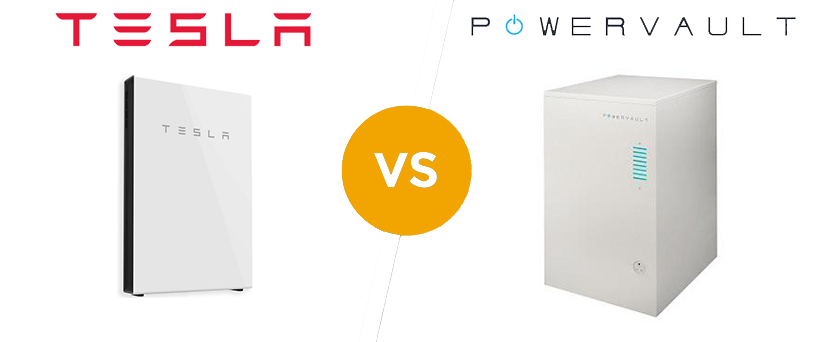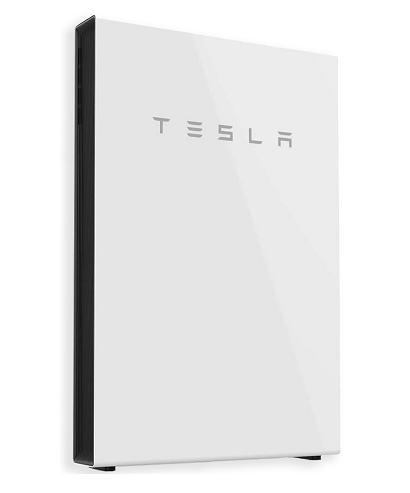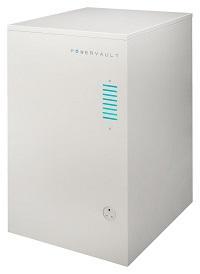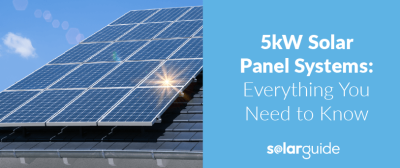Tesla Powerwall 2.0 vs Powervault G200: Which is the Best Solar Battery?

Looking for the best way to store excess energy generated by your solar panels? A solar battery will help to further reduce your energy bills and we’ve put two of the best models head-to-head to help you find the right one for your home: Tesla Powerwall 2.0 vs Powervault G200.
Get your best deal
Quickly compare up to 4 free quotes
- It's free, easy and without obligation
- Compare quotes & get the best prices
- Save up to £915 per year

What is a solar battery?
Let’s start by finding out exactly what a solar battery is and how installing one could help your home. During the day, solar panels often generate more energy that can be generated around the home and, as a result, is sent to the National Grid, solar batteries store this excess energy, giving you a power source during the night when your solar panels aren't generating any energy. Some of the benefits of installing a solar battery include:
- Lower your energy bills
- Reduced reliance on your energy supplier
- Use more of the energy generated by your solar panels
Tesla Powerwall 2.0

The Tesla Powerwall has a capacity of 13.5kWh, more than any other single battery on the market and it’s possible to stack as many as 10 units together.
This is an extremely adaptable solar battery that can be mounted almost anywhere around the home. You also won't have to worry about the product around children or pets as there are no wires or areas that will overheat. Plus, thanks to modern design it won't look out of place.
Download the Tesla App to help you stay on top of your energy usage in real-time, wherever you are, with weather forecast alerts and energy usage estimations.
Powervault G200

Thanks to the Powervault G200 including everything needed to get your system up and running at the price, you won't have an unexpected cost coming your way. Powervault say that a qualified electrician can install the G200 in under 2 hours and, once installed, Powervault states that as a homeowner you could be saving up to 20% on your electricity bills.
After installation, you can keep on top of your energy usage with a Customer Portal that also allows you to see the battery's charge level and how the Powervault is performing. When your solar battery reaches the end of its life, Powervault is able to recycle 99% of the lead in their solar batteries.
The latest range of Powervault solar batteries is now available – find out about the Powervault 3.
Tesla Powerwall 2.0 vs Powervault G200
The Tesla powerwall 2.0 and Powervault G200 are amongst the most reliable solar batteries available in the UK and when comparing them, they can be difficult to split. Let's take a look at the features of the Tesla Powerwall 2.0 and Powervault G200 side-by-side.
| Specifications | Tesla Powerwall 2.0 | Powervault G200 |
| Capacity | 13.5kWh | 2-6kWh |
| Technology | Lithium-ion | Lithium-ion |
| Warranty | 10 years | 10 years |
| Weight | 125kg | 85-125kg |
| Operating Temperature | -20°C to 50°C | 0°C to 35°C |
| Dimensions (HxWxD) | 1150 x 755 x 155mm | 820 x 500 x 580mm |
| Mounting | Floor, wall, interior or exterior | Indoor floor-standing |
| Cost | £5,400 | £2,500+ |
Capacity
The capacity of a solar battery shows how much energy it will be able to store for use around the home when needed. Between these two solar batteries, the Tesla Powerwall 2.0 has a much higher capacity than the Powervault G200 with 13.5kWh compared to 2-6kWh depending on the exact model you get. While the Powervault can't store as much as the Powerwall 2.0, it's been designed for the average UK home which uses around 10kWh a day.
Price
At £5,400, with a £400 deposit, the Tesla Powerwall 2.0 is the more expensive of the two, around double the price of the Powervault G200, making the G200 the ideal Tesla Powerwall alternative if you don’t have the budget.
It’s worth noting that neither of the prices in the table include the cost of installation, which can end up being roughly between £800 - £2,000, but this will vary depending on the installer carrying out the installation.
To help you get the best deal possible on your solar battery installation, you can get free no-obligation quotes from up to 4 solar battery installers based in your local area. Once you have the quotes, you’ll be in a position where you can compare them and pick the best one for you and your home.
Get your best deal
Quickly compare up to 4 free quotes
- It's free, easy and without obligation
- Compare quotes & get the best prices
- Save up to £915 per year

Warranty
Both the Tesla Powerwall and Powervault G200 are available with a lengthy warranty of up to 10 years, which means you're well covered after the installation. The length of a Powervault warranty differs depending on the model and could be 3, 5 or 10 years long. During that time, Powervault will repair or replace defective parts without any charge for parts and labour.
Size
In terms of physical size, the Tesla Powerwall weighs 125kg, which sits somewhere between the Powervault range in terms of weight, as they vary from 85-200kg. The Powerwall 2.0 will take up more space in terms of its height and width but it won't protrude out from the wall as much as the Powervault.
Tesla Powerwall 2.0 vs Powervault G200: The Winner
At the times when you're most likely to be using the energy stored in a solar battery (evenings and overnight) between 5-10kWh is about how much is needed for the average household. So, don't be put off by the Powervault G200 not having as much capacity as the Powerwall, as it can store more than enough for your home. If you feel that your home is well above average, in terms of electricity usage, then the Powerwall 2.0 will be the best solar battery for you, and if your energy usage increases over time you can add up to 10 units.
Despite the Powerwall 2.0 having a higher capacity than the Powervault, it's still not enough to enable you to break free from the National Grid just yet. You'll still need to top up your energy through your energy supplier but that's true of any solar storage system at the moment.
If your home has a high demand for electricity, then the Powerwall probably feels like the clear winner and, to seal the deal, the Backup Gateway 2.0 is a great feature that will keep your home running during a power cut.
Interested in a solar battery for your home?
Whether you like the sound of a Tesla Powerwall 2.0, a Powervault G200 or any other solar battery on the market, Solar Guide can put you in contact with recommended installers based in your area. Simply complete an online form and you’ll get free no-obligation quotes from up to 4 solar battery installers:
- Our service is completely free
- There’s no-obligation to accept any of the quotes
- You’ll only be contacted by MCS certified (or equivalent) companies
Once you’ve received the quotes, you’re then free to compare them and get the best price possible.
Get your best deal
Quickly compare up to 4 free quotes
- It's free, easy and without obligation
- Compare quotes & get the best prices
- Save up to £915 per year

Is a Solar Power Diverter the better option?
While solar batteries are one way to store and make use of the excess energy generated by your solar panels, they're not the only solution. Solar power diverters allow your heating system to benefit from solar energy, which means that your boiler won't have to work so much and you could be on your way towards free hot water. Plus, they don’t tend to be as expensive as solar batteries.
Solar power diverters monitor the amount of energy being generated by the solar panels and how much is being used around the home. When there’s more energy being generated than used the solar power diverter will divert surplus energy to an immersion heater in the hot water tank, which means that the water in the cylinder gets heated with free energy. This will continue to happen until another appliance around the home needs the energy.
While the benefits of solar power diverters and solar batteries are similar:
- Reduced energy bills
- Use more of the energy being generated by your solar panels
- Less reliance on your energy supplier
Each has its own unique benefit, with solar power diverters offering the possibility of free hot water, while solar batteries store free energy to use during the evening and at night. Find out which is best for your home by comparing the two technologies in Solar Power Diverters vs Solar Batteries.
Whether you're interested in one of these models or you have another manufacturer in mind, the best way to save money on the installation is to compare quotes. You can easily complete our quick and simple form below and we'll find you free quotes from up to 4 accredited solar installers in your area.
Get your best deal
Quickly compare up to 4 free quotes
- It's free, easy and without obligation
- Compare quotes & get the best prices
- Save up to £915 per year

Find local, MSC certified Solar Installers
Start your quote
Find local, MSC certified Solar Installers















